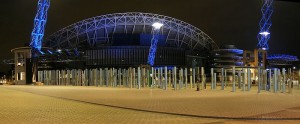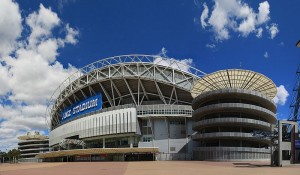The 2000 summer Olympic Games were held in Sydney, Australia, leaving behind a mixed legacy. Glen Searle, a professor of Design, Architecture and Building at the University of Technology in Sydney wrote about such in his article “Uncertain Legacy: Sydney’s Olympic Stadiums”. One of the major long lasting problems seems to be that primary focus of the buildings was just for the two week long games; the fact that the facilities would be there for decades later always took a backseat in the design stage.
The biggest headache has come from the largest Olympic building called Stadium Australia. The article points out two main reasons why Stadium Australia has become such a white elephant. First, there is a lot of competition from other stadiums that the Australia Government had either built or renovated within ten years before the Olympics. Second, the national teams that are leased to play there bring in only small crowds. The author also points out that the stadium is perhaps just to big to sustain itself. It once held 110,000 people, and was reduced in size to 83,000 in 2003. The goal for the stadium was for it to be filled to capacity 41 times in two years ( nearly every other weekend) with football games. However, the stadium only ended up hosting 8 games. This resulted in a 24 million dollar loss in its first year, and a loss every year after that. Years later, a new problem arose in that that it is in the way of new urban expansion. I agree with the author that overall, the stadium was great for the country in the shortrun, but has been a source of concern ever since it was built.
I found a New York Times article called “So, You Want to Hold an Olympics” that explains how the Atlanta Games were fianced. It seems that Atlanta paid for all the infrastructure such as roads, airport expansion, public transportation, etc., while all the venues were commercially funded. This might have been a better system for Sydney because the stadium could have been torn down when it was no longer needed and profitable.


